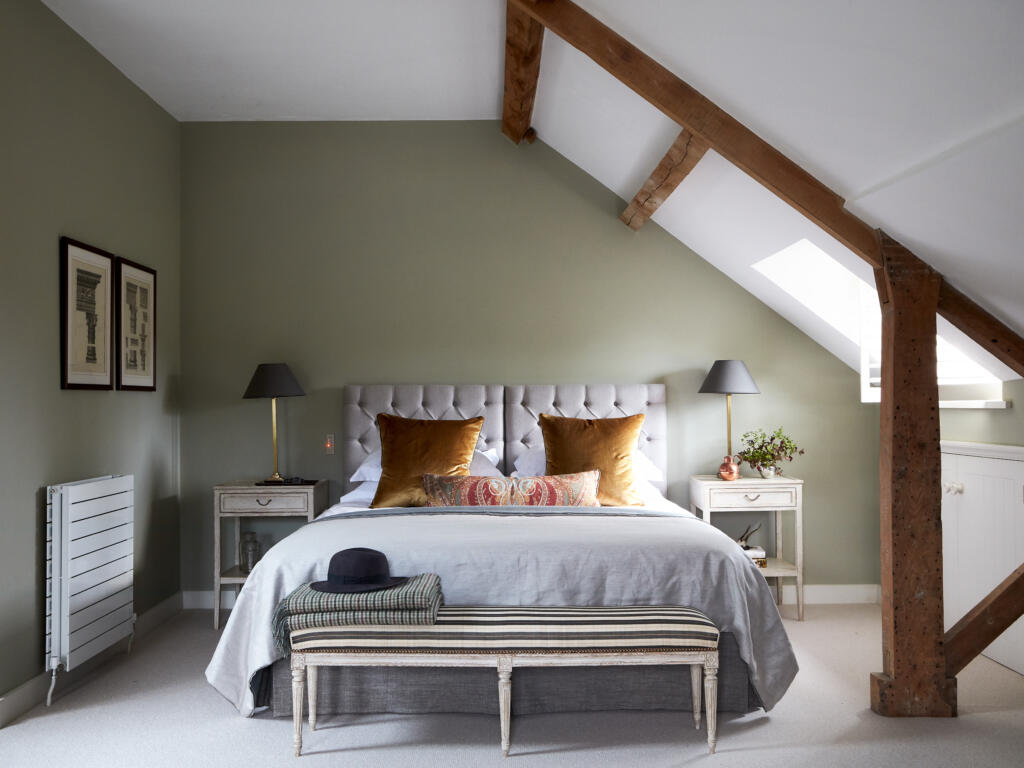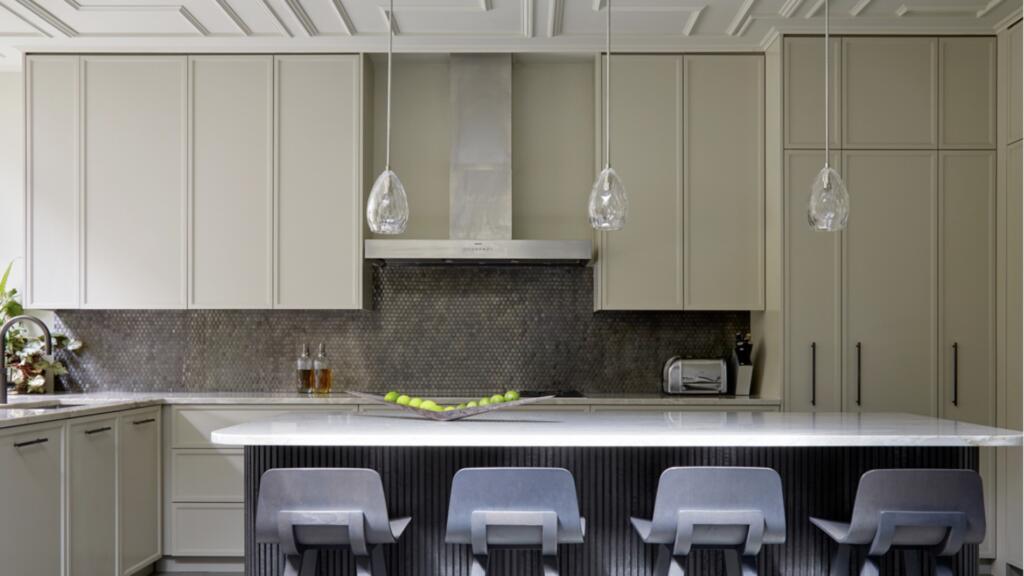
5 interior surface trends for 2023 that we love
Joy Archer
Understanding these key concepts will help you elevate your décor to professional levels
The modern business of interior design started, fittingly, with a colourful New York character named Elsie de Wolfe. It was this Big Apple grand dame who, in the early 1900s, set in motion a career path that Oxford Dictionary now defines as, “the art or process of designing the interior decoration of a room or building”.
In 1905, when her acting career sputtered and stalled, de Wolfe accepted a challenge from friends to design their female-only Colony Club at a swanky Manhattan address. Her first professional commission debuted to rave reviews and she never looked back. To this day, de Wolfe has set the standard for the interior designer as a peerless purveyor of good taste.
The modern business of interior design started, fittingly, with a colourful New York character named Elsie de Wolfe. It was this Big Apple grand dame who, in the early 1900s, set in motion a career path that Oxford Dictionary now defines as, “the art or process of designing the interior decoration of a room or building”.
In 1905, when her acting career sputtered and stalled, de Wolfe accepted a challenge from friends to design their female-only Colony Club at a swanky Manhattan address. Her first professional commission debuted to rave reviews and she never looked back. To this day, de Wolfe has set the standard for the interior designer as a peerless purveyor of good taste.
 Credit: Studio Dean
Credit: Studio DeanToday, interior designers are the backbone of the world’s visual arts industry – kitting out the world’s hotels, restaurants, bars and pubs and creating remarkable homes.
The most famous of them are now superstars in their own right. The famous British Candy brothers – Nick and Christian – own their billion-pound fortunes to the interior design business.
We reached out to Cathy Dean, CEO and founder of Newcastle-based interior design company Studio Dean to share her viewpoint on interior design. Dean says: “For me, real interior design is so much more than adding colour to the walls and styling a room with new homeware – that is interior decoration.
“True interior designers think architecturally and plan out the space within a home to make it work for the inhabitants – knocking down walls and moving rooms about if needed.
“Interior designers need to be called in early, before architects, and long before builders, to find the right flow for your home. We then work with the wider team to build a vision that works beautifully for real life.”
 Credit: Studio Dean
Credit: Studio DeanResidential interior designers focus specially on the homes market. While they may gear their businesses to serve specific price-points, certain fundamental aspects of residential designers’ work are consistent across the board:
Outside of medicine and psychology, few jobs require such an intimate experience with clients as interior design does. This is particularly true at the higher end of the market, where projects may last for years, and the designer must partner with the client to create the lifestyle of the client’s dreams.
At the other end of the scale, digital-only interior design services – where client and designer never meet – are becoming more popular. Just recently, Ikea launched its own online offering. This obviously involves less one-to-one contact, but does mean that a designer needs to be able to read their clients’ needs quickly and accurately.
Regardless, getting the client/designer relationship right will always be a important part of the profession, as will an expectation to take client wishes on board. Strong client management skills are therefore an integral part of being a successful interior designer.
 Credit: Shutterstock / Ozgur Senergin
Credit: Shutterstock / Ozgur SenerginThe internet and popular media has democratised design. There’s a wider appreciation for colour theory and interior trends that has grown through social media. But that doesn’t mean just anyone has the skills – or contacts – to be an interior designer.
For example, interior designers have a huge role to play in the development and preservation of artisanal decorative arts, from weaving and glass-making to luxury paint-making and custom leather works.
A layperson would lack a trained interior designer’s encyclopaedic knowledge of artisan makers, refined materials and highly skilled craftspeople. And if an interior designer is presented with the same budget as a layperson, their ability to compose colours and patterns will inevitably result in a stronger, more cohesive look. Without a natural ‘eye’ for elements such as scale, composition and colour, a budding interior design won’t make the cut.
It is fair to say that outstanding taste is necessary to be an accomplished interior designer. The internet has made good design available to everyone, so a professional designer needs to be that much sharper to stand out.
Some interior designers are maestros at space planning. When you get a truly excellent space planner, your home will be reimagined in ways that feel layered, active and intelligent.
Good space planning is all about how your rooms will flow and can have a serious impact on the quality of your life – imagine having mobility issues and this not being taken into consideration when designing your home from scratch.
Space planning can potentially be highly technical. Depending on the scope of your project, your new layout might require custom joinery or furniture to be designed, built and installed. Which leads to another skill set that your interior designer should bring to the table – the ability to produce detailed working drawings.
Do note, this quality might not necessarily be so pronounced in a designer with genius eye for styling, and vice versa. So if you have a challenging space to work with, choose your designer with a history of good space planning.
 Credit: Shutterstock / Stefano Chiacchiarini ’74
Credit: Shutterstock / Stefano Chiacchiarini ’74A designer without a broad knowledge of design history – both locally and around the globe – will have a rather limited design repertoire.
Going back to the Oxford Dictionary definition of what interior design is, you’ll recall ‘art’ was mentioned. In order to create original art, it is important to know the work of the masters that have gone before. No one creates in isolation.
Ancient African masks inspired Picasso, who inspired Le Corbusier who is father of the modernism, and so on and so on.
A studied appreciation for the history of art and architecture is the rich soil from which an interior designer’s concepts bloom.
Some excellent books to explore to get caught up on the history of design from past to present include Early Art and Architecture of Africa (Oxford History of Art) by Peter Garlake.
Also, check out A History of the World in 100 Objects by Dr Neil MacGregor.
 Credit: Studio Dean
Credit: Studio DeanRegardless of the price bracket, a key element of a designer’s job is to know materials well, know what they may be used for and specify them accordingly. The really clever interior designer also knows when to break materials rules and to think outside of the box without compromising the functionality of a design project. These materials can include textiles, paints, cork, metal, glass, marbles, leathers – the list is long and varied.
Of course, where money is no object, the options are endless. Some of the more exquisite examples I have personally seen are marbles punctuated by intricate brass details and a basin made of mesmerizing natural rock crystal.
But it’s at the mid-price point that designers can really earn their fee. By knowing the well-priced but fabulous materials that are rarely used, a designer can give their client an original design that stands out from the crowd.
For example, materials like plywood, which have been traditionally (and unfairly) dismissed as cheap and poor quality, have had a design renaissance in recent years. Similarly, there are some excellent composites that mimic more expensive materials such as Carrara marble.
 Credit: Shutterstock / Halit Sadik
Credit: Shutterstock / Halit SadikA competent interior designer should be able to draw up a decent lighting plan, focusing on both decorative and functional fixtures as well as circuitry.
In tricky areas, such as rooms with very low ceilings, they will have a working knowledge of what lights are available on the market for specialist needs or know who to ask for guidance.
On high–end residential projects, interior designers will often work with ateliers, such as Cox London to create custom and bespoke lighting designs.
It is worth noting that lighting design is also a standalone specialism within the profession.
If your budget extends to a lighting designer, you will be amazed at what light can do. Experiencing amazing lighting scenes in your home and garden is in another league from simply hanging a pendant in the middle of a room.
 Credit: Shutterstock / Paolo Bona
Credit: Shutterstock / Paolo BonaThis is probably the task that people most closely associate with interior design. Yet in reality, choosing furniture is just 5-10% of what an interior designer does on a full-blown renovation project.
Furniture comes under two umbrellas: sourced pieces (be they new or antique) and custom –designed furniture. Aesthetics are not the only force at play when it comes to what furniture ultimately ends up in your project. A good interior designer will road test its suppliers and work only with those who have a track record of delivering on time.
The good news is that furniture selection (or at least a conceptual representation of what you will get) occurs early on. Some clients enjoy getting involved in this element of the process – though a top tip would be to never go off and buy furniture, then spring it on your designer and ask them to work it into their design. This rarely results in a successful scheme.
If you have some cash and want some furniture and accents sourced at high -street prices, that is not interior design – it’s personal shopping. If that’s all you need, the right person to call is a room stylist. Some specialise in styling rooms for sale (also known as home staging), and can be sourced through your estate agent. Room stylists can dress your home beautifully, without the costs that come with hiring a personal interior designer.
In the UK, it’s possible to study interior design to degree level. However, there is no mandatory academic path. Professional bodies like the British Insititute of Interior Designers (BIID) set strict criteria for their membership, to protect the public from malpractice, but you don’t need to be a member of the BIID to practise interior design.
We recommend that you check that your interior designer has undertaken suitable training and has worked on a range of projects. It’s savvy to ask for references from previous clients and see examples of their work, ideally in the flesh.
Should you wish to pursue an undergraduate degree or even a masters degree in interior design, you will find accredited educational institutions to train you for the career.
Guardian Top 10 institutions for interior design, 2022
Although you might choose to do so, there is no need to attend a university to re-train as an interior designer. Diploma courses offered by institutions such as KLC School of Design and Inchbald are world renowned and uncompromisingly rigorous. KLC offers everything from home-based part-time vocational training to classroom-based BA courses that are widely accepted as top-class training.
UCAS is an excellent starting point for finding classroom and digital courses throughout the UK.
The BIID offers a quick summary of what you should know once you have completed your academic course of study.

Joy Archer

Joy Archer

Joy Archer

Sarah Harley